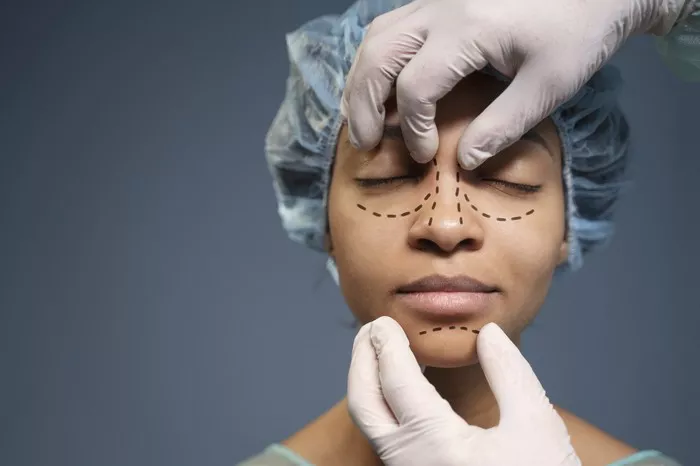Rhinoplasty, commonly referred to as a “nose job,” is a popular cosmetic surgical procedure that focuses on reshaping the nose to improve its appearance and, in some cases, its function. Whether you’re considering rhinoplasty for aesthetic reasons or to address functional issues, it’s essential to understand what happens during the surgery. In this article, we’ll take an in-depth look at the various aspects of rhinoplasty surgery, including pre-operative preparations, the surgical procedure itself, and post-operative care.
Pre-operative Consultation
The journey to rhinoplasty surgery begins with a comprehensive pre-operative consultation with a board-certified plastic surgeon or an otolaryngologist (ear, nose, and throat specialist) who has expertise in rhinoplasty. During this consultation, you and your surgeon will discuss your goals and expectations for the surgery.
Medical History and Evaluation: Your surgeon will review your medical history, including any previous nasal injuries or surgeries, allergies, and current medications. A physical examination of your nose, both externally and internally, will be conducted to assess its structure and function.
Photographs: Your surgeon will take photographs of your nose from different angles. These photos serve as a reference point for both you and the surgeon throughout the process.
Computer Imaging: Some surgeons use computer imaging software to provide a visual representation of potential surgical outcomes based on your goals. This helps in setting realistic expectations.
Discussion of Expectations: You’ll have an open discussion with your surgeon about your desired outcome. It’s crucial to be clear about what you hope to achieve, whether it’s correcting a deviation, reducing the size of your nose, or refining the tip.
Surgical Planning
Once you and your surgeon have a clear understanding of your goals, a personalized surgical plan will be developed. This plan takes into account the unique anatomy of your nose and the changes needed to achieve the desired outcome.
Anesthesia: Rhinoplasty can be performed using either local anesthesia with sedation or general anesthesia, depending on the complexity of the procedure and your surgeon’s preferences. Your surgeon will discuss the anesthesia options with you during the pre-operative consultation.
Incisions: Rhinoplasty can be performed using either an open or closed approach. In the open approach, an incision is made across the columella (the strip of skin separating the nostrils), allowing for better visibility and access. In the closed approach, incisions are made inside the nostrils, resulting in no visible external scarring.
Reshaping the Nose: The surgeon will then proceed with reshaping the nose based on the predetermined surgical plan. This may involve reducing or augmenting the size of the nasal bridge, refining the nasal tip, correcting deviated septums, or addressing other structural issues.
Internal Structural Adjustments: If you’re having functional issues like breathing difficulties, your surgeon may perform additional internal procedures, such as septoplasty or turbinate reduction, to improve nasal airflow.
Closing Incisions: Once the necessary changes have been made, the surgeon will close the incisions using sutures and may use external splints or internal packing to support the newly shaped nose.
Post-operative Care
After rhinoplasty surgery, it’s crucial to follow your surgeon’s post-operative instructions carefully to ensure a smooth recovery and optimal results.
Recovery Room: You’ll spend some time in the recovery room under observation until the anesthesia wears off, and your vital signs are stable.
Pain Management: Pain and discomfort are common after rhinoplasty. Your surgeon will prescribe pain medications to manage any post-operative pain.
Swelling and Bruising: Swelling and bruising around the nose and eyes are expected. Cold compresses and keeping your head elevated can help reduce these symptoms.
Splints and Dressings: If external splints or internal packing were used, they will be removed by your surgeon during a follow-up appointment.
Follow-up Appointments: You’ll have several follow-up appointments with your surgeon to monitor your progress, remove sutures, and assess healing.
Return to Normal Activities: Your surgeon will provide guidelines for when you can resume normal activities, including exercise and wearing glasses.
Conclusion
Rhinoplasty is a highly personalized surgical procedure aimed at enhancing both the appearance and, in some cases, the function of the nose. Understanding what happens during rhinoplasty surgery, from the pre-operative consultation to the post-operative recovery, is essential for anyone considering this procedure. By working closely with a qualified and experienced surgeon and following post-operative instructions diligently, individuals can achieve the desired results and regain confidence in their nasal appearance and function.


